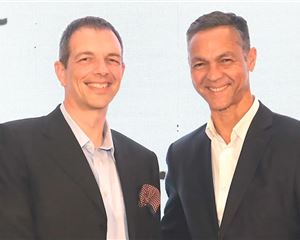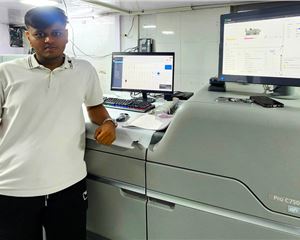Pamex 2023: Xerox is looking to regain its digital mojo
Shankaracharya Laskar, sales director for technology and channels for Xerox India, in a conversation with Noel D'Cunha, discusses how Xerox is regaining its mojo with a new strategy
28 Mar 2023 | By Noel D'Cunha
Noel D'Cunha (ND): What are you showcasing at Pamex?
Shankaracharya Laskar (SL): We have two broad objectives for Pamex, which is derived from our customers' expectations right after Covid-19. We looked at customers and how they have evolved their businesses after Covid. We found that they have two key priorities. One is how they can build newer revenue streams, which are profitable from their business perspective. And the second is how they can manage their costs. So, our entire focus around Pamex is on how we can deliver customer success around these two broad pillars.
One of the ways we are trying to create the new revenue stream is with CMYK Plus. We start from an entry production machine, where the customer can travel in the journey of getting into CMYK Plus, with an entry production engine, go probably to a mid-production, and then to a high-end production as their business grows. As you can see from the sampling, this is from a mid-production engine. The second pillar comes in when you are talking about reducing costs and increasing productivity. Software automation can play a lot of roles, which still need to be exploited to maximise the impact.
ND: How?
SL: We have a software suite called FreeFlow Core software. When you look at the entire suite of pre-press automation that a printer would typically expect to do, many of the tasks are now primarily manual. The way the industry is currently addressing it is in bits and pieces. We are on the journey to taking this to the next level where we want to impact customers' productivity adaptively.
ND: What is the percentage of people who are following this systematic and organised workflow?
SL: Recently, we went to some of our customers. We mostly talked upstream, trying to find out their pre-press workflows, what they are currently doing, and how we can impact their system with our software. We believe that there is a very big scope to impact customers' success around productivity.
ND: Is the offset industry adopting this system?
SL: Yes, but they do it in isolation and only for offset machines. They will do a portion of digital in some form, with the help of the software they invest in. The highlight of our software is that it talks about various technologies beyond digital. It can address a quick printer environment and an offset environment. We are trying to have a broad-based pan-industry offering, starting with focusing on digital and impacting other platforms.
ND: What is the core service that Xerox provides to its customers?
SL: The software is an interesting value addition to the company, but the core still remains the same. And the core is where we would want to really continue to impact and that is where the first pillar comes in- how we are helping customers differentiate themselves from CMYK Plus. For example, our entry-level production machine is capable of 11 colours. A customer can start with a CMYK. Then, in 13 or 14 minutes, the customer can switch over to fluorescent, and start printing fluorescent as a second pass if required, or as a fresh design. If a business requires you can flip again to the third option, which will have gold, silver, white, and clear.
ND: And what is a high-end printer?
SL: The high-end printer is our flagship product, Xerox Iridesse Production Press. With 10 colours, it’s got the range which is probably expected of a commercial printer, as well as a strong photo segment customer. We are mainly focusing on the companies who are doing only CMYK but have not dabbled into CMYK+. Such companies have to opt for high-end machines. But now they can start with an entry production machine, build their business, and dabble a little bit across the 11 colours. We can also help them grow as we have a strong customer-focused programme globally called Genesis.
We found out that the success of CMYK Plus is not just in selling the technology, but it is also enabling the customers to market to their end customers.
ND: How has the response been for these machines?
SL: We are in active discussions with many customers. It is the richness of the conversations that we are having with very focused customers, I think we will go a distance with these customers.
ND: When was CMYK Plus launched?
SL: The adaptive CMYK Plus was launched recently in India. It was our first full attempt in the market, as we also showcased it in the PrintPack last year. However, this is the first full exposition of that portfolio with the full breadth of applications and a million possibilities.












 See All
See All